Items
topic_interest is exactly
technology
-
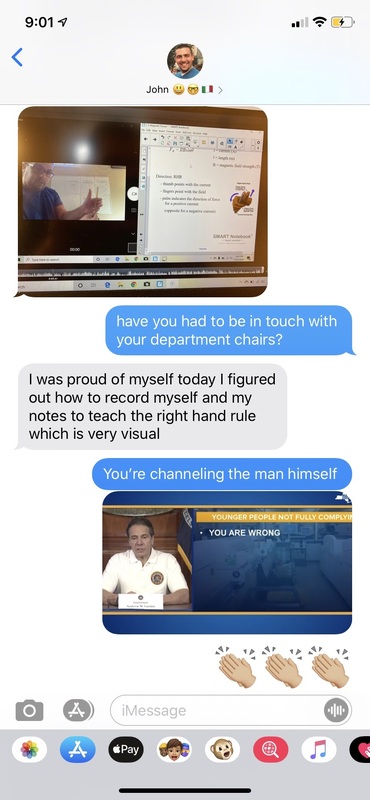 2020-03-25
2020-03-25Teaching in the "New Normal"
My friend John is a high school math and physics teacher on Staten Island. On March 25, 2020 he sent me photo of his laptop screen. Schools had been closed for about ten days and he, like many other teachers across the state, had to improvise how to continue educating in this radically new reality. He wrote, “Proud of myself today. I figured out how to record myself and my notes.” I compared it to the setup of Governor Cuomo’s daily press conferences which were a unifying and relied-upon source of information in those early days of the pandemic. When I asked him to reflect on that lesson he said: “That early in the pandemic I was lucky I was good with tech so I immediately started recording lessons for students to watch asynchronously. In my mind it was the best way to keep continuity. (I would bet at that time I thought we would be back in school before the end of the year). That lesson in particular is very visual (the right hand rule) so I wanted to figure out how to have notes on the screen and myself to be able to show how to use the right hand rule. I tried to do as closely, as I could, what I would have done in class. I tried to have the students continue hearing from me. The videos were posted so students could learn asynchronously. I did host some live sessions where they could ask questions on anything they learned. We could not mandate synchronous learning because families could have multiple students sharing a computer or even parents who now needed to work remotely, etc. That policy changed in Sept. 2020 when we gave out laptops so we could say you have your own meet at your normal class time.” -
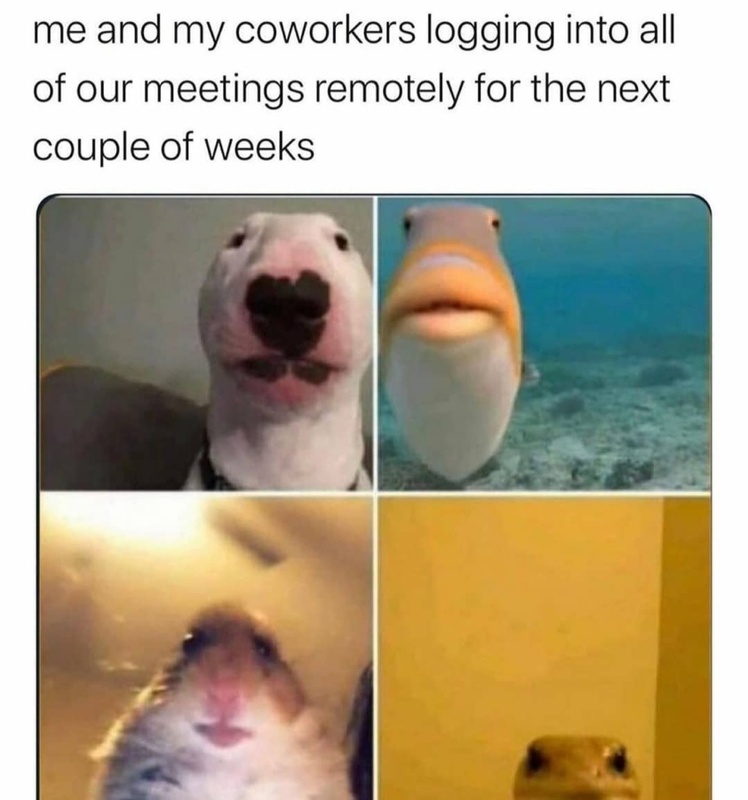 2020
2020Zoom Meetings
This was a meme my friends and I shared around after Zoom became the #1 way of communicating, both in work and personal lives. It's poking fun at how awkward and stiff people usually look on camera, as well as the learning curve around using different Zoom functions. -
 2022-06-10
2022-06-10Pride is back — and more expensive than ever
This is a news story from The Washington Post by JD Shadel. Due to the last two years of Pride Month remaining virtual due to COVID, some changes have been made along with it. Included in the changes since COVID are leadership ones in Philadelphia and London after allegations of their Pride leadership having racism and transphobia. The rising inflation has made it so summer travel is more expensive than before. Things like hotels, plane rides, and other modes of transportation cost more than they did before COVID. One change that has been brought about because of COVID is the rise of virtual events. Groups like NYC Pride, Capital Pride and Pride Amsterdam will have online streaming available. The NYC Pride March and the LA Pride March will be available on Hulu. Another debate that has changed since COVID are questions about "pinkwashing" in which a company will recognize Pride for profit, while not donating to any LGBTQ organizations. Some of the corporations in the past that have used Pride merchandise to sell things during Pride month while contributing to anti-LGBTQ organizations have been heavily criticized recently. Overall, COVID has contributed to changes in how Pride is celebrated. -
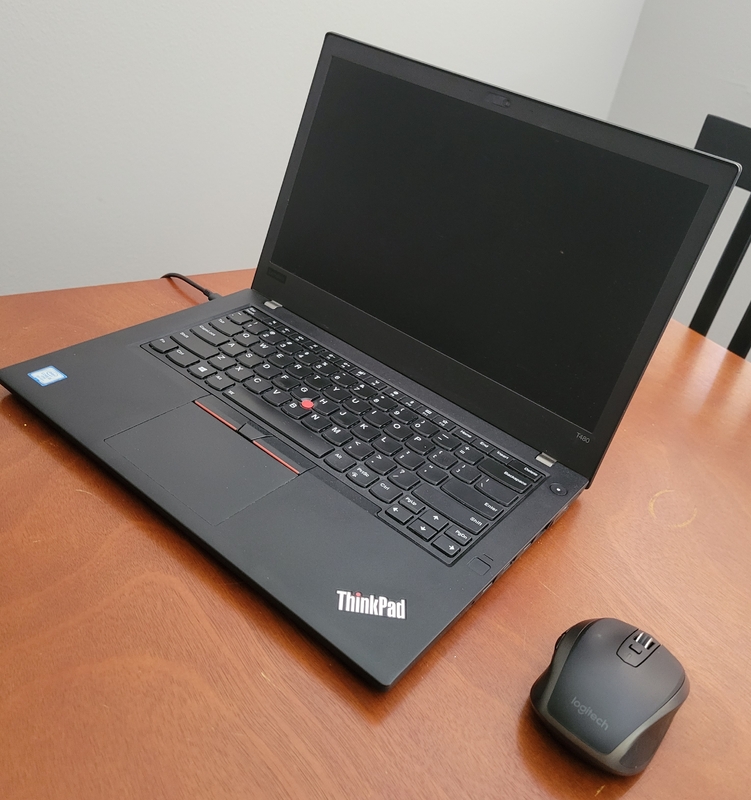 2022-05-07
2022-05-07Our Link to the World
This photo is of my trusty laptop that got me through the pandemic. During the lockdown, I actually had to travel a lot for work. During my travels this laptop kept me linked in with work, school, and my family. Though my particular COVID story is different than most, I believe that my object is relatable to a lot of people. Many people can relate to having to telework, being forced into online school, and only being able to contact loved ones remotely. While remote working, learning, and conversing is nothing compared to real life, technology played a large role in our lives during COVID and I cant imagine how things would have been without it. -
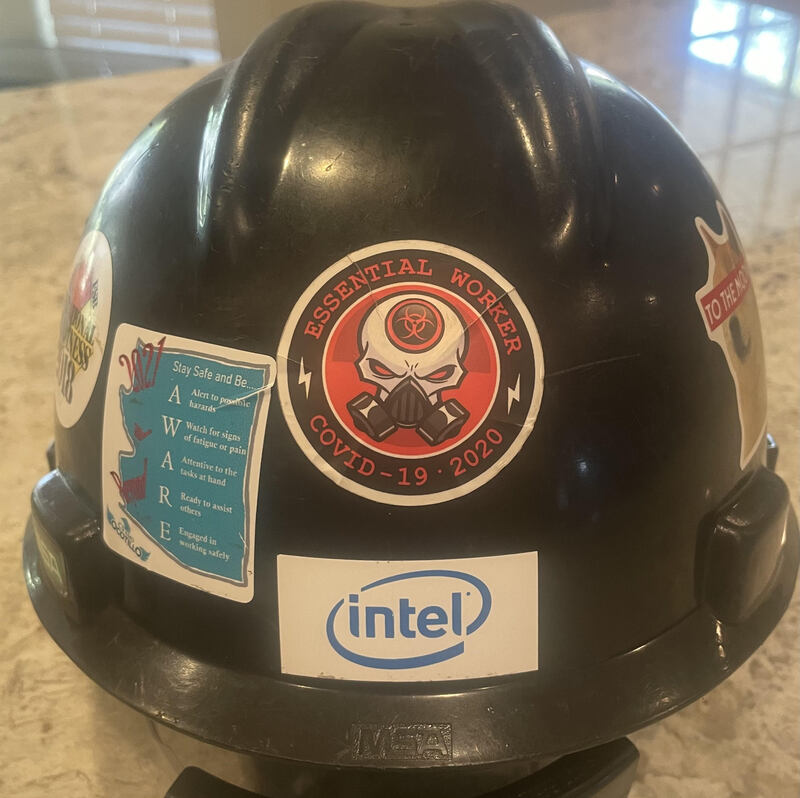 2020-05-18
2020-05-18Essential Worker Hard Hat Sticker
The attached picture is a part of my story during the pandemic. I work in the semi-conductor industry at a site that makes a large amount of important computer chips that are vital throughout the world. Our site was experiencing the pandemic just like everyone else, parallel to a time when everything we manufactured was in extreme demand due to many people working from home, schools teaching from a distance, cars needing chips, and medical equipment in high demand. It was absolutely critical that our site continued to operate safely and could not shut down. Our site and corporate managers made policies to ensure that only the minimum number of critical employees were on site to limit the chances of COVID-19 transmission, while following state-mandated essential rules during the early pandemic shutdowns. I was given a form to travel with and this sticker, additionally our badges would not let us in the site without specific essential worker access. This sticker is a daily reminder of what a crazy time I was part of, working on our site with minimal people pulling together to enable people to have the technology the needed to keep the world moving, from home... -
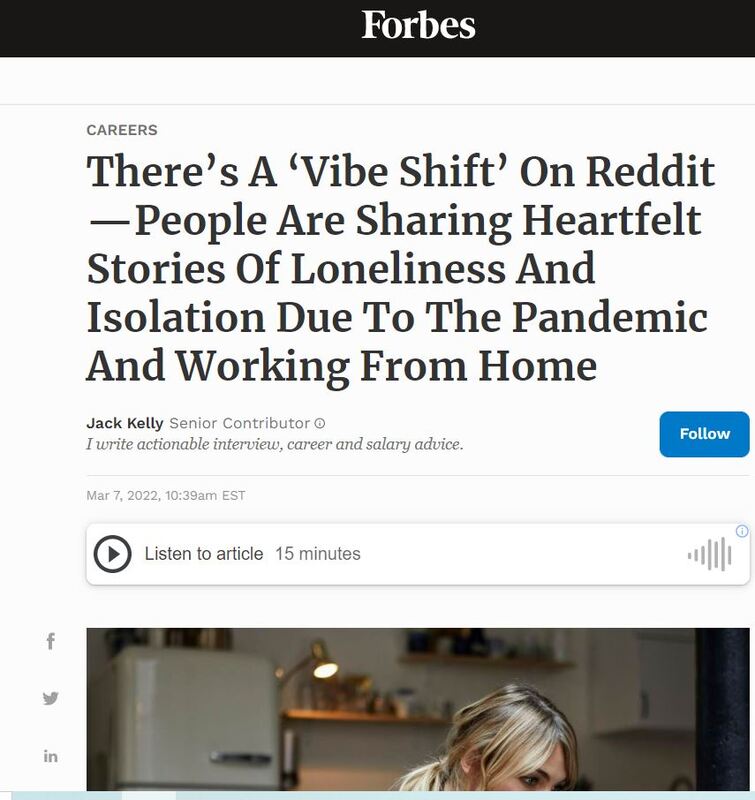 2022-03-07
2022-03-07There’s A ‘Vibe Shift’ On Reddit—People Are Sharing Heartfelt Stories Of Loneliness And Isolation Due To The Pandemic And Working From Home
This is a news story from Forbes by Jack Kelly. This story is about loneliness felt from isolation that people are discussing on Reddit. Subreddits like r/antiwork and r/wallstreetbets, a lot of these conversations are sharing details about their feelings they might not want to share elsewhere. Since Reddit allows people to submit anonymously, it gives others an environment they can give more details on subjects they maybe wouldn't tell to even their family members. Some of these discussions are about those that are single and work from home, which creates a very solitary experience. One woman, 27, on Reddit describes trying to join Facebook groups and do online dating to have more interaction during the pandemic. She says she felt a slight panic seeing her other friends get married, have kids, or engaged, which made her feel even lonelier. Others describe the challenges with finding remote work and needing support to help cope with that hardship. The lack of socialization has had massive effect on young adults just starting out in life, and it has given some worse mental health as a result. While some might thrive with being alone, others have suffered. Another woman, 32, says that prior to the pandemic, she was a 'social butterfly' and outgoing, but is now antisocial and a shut-in. She says that she lacks the motivation to go places like she used to. In addition to this, her place of employment is considering permanent work-from-home for employees, making some of those social struggles even worse. Some Redditors ended up giving advice for people that shared stories like these, such as smiling every day towards someone, or going outside for 15 minutes or longer. Simple things like this were common suggestions to help with some people's mental health issues induced because of the pandemic isolation. I think that this story helps show some of the negative effects young people have had with readjusting their entire lives, and then feeling lost once they get too used to it when things are starting to go back to "normal." -
 2022-04-05
2022-04-05Jerry Gryglak 'humbled' to receive Governor's Citizenship Medal for daily Reddit COVID updates
This is a news story from The Denver Gazette by Lindsey Toomer. Since June 2020, Jerry Gryglak has posted COVID updates on the subreddit r/CoronavirusColorado, and breaking down the information to be more user-friendly. This has helped Redditors get better information on the virus. Due to his diligence, Governor Jared Polis is recognizing Gryglak as one of Colorado's COVID Heroes and will get the Governor's Citizenship Medal. Gryglak left posts on Reddit with updates on deaths, hospitalizations, vaccines, and other such information. Gryglak is unsure how much longer he will be posting these updates. -
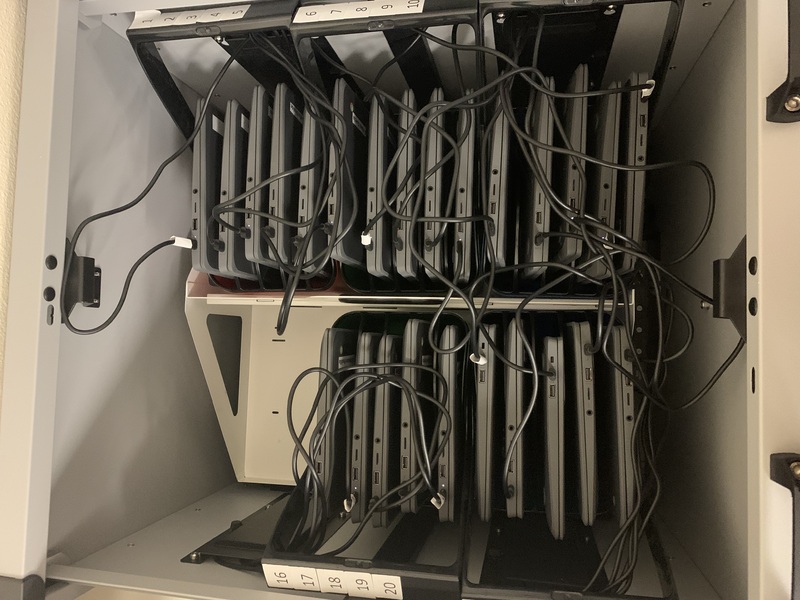 2020-08-12
2020-08-12From Notebooks to Ipads and Chromebooks
Following the reopening of schools through the virtual world a number of students across the country were faced with a new problem. They lacked the technology needed to attend their online class. Schools who fell under the title 1 classification , which is where children from low-income families make up at least 40 percent of the enrollment, were disproportionately affected by this problem. These families which often consisted of more than one child simply couldn't afford multiple computers. As a result many kids were still unable to attend their classes or do any work at all. This lack of technology was a problem that not only younger kids faced. Students ranging from all ages had to adapt and make due with whatever technology they had or were forced to go out to buy another computer.So in order to help fix the problem for younger students schools began to hand out chromebooks and ipads. By providing them with the technology to access their new classroom setting they could begin attending school again. While there were still other problems such as the lack of internet, handing out chromebooks and ipads definitely had a positive impact by providing a number of students with these new school supplies. -
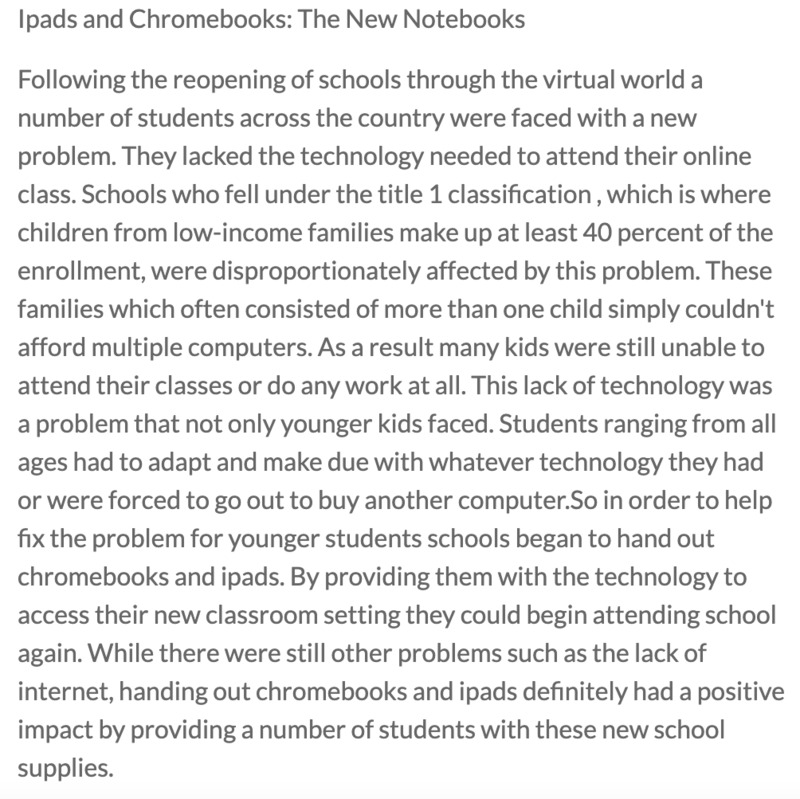 2020-08-11
2020-08-11Ipads and Chromebooks: The New Notebooks
Following the reopening of schools through the virtual world a number of students across the country were faced with a new problem. They lacked the technology needed to attend their online class. Schools who fell under the title 1 classification , which is where children from low-income families make up at least 40 percent of the enrollment, were disproportionately affected by this problem. These families which often consisted of more than one child simply couldn't afford multiple computers. As a result many kids were still unable to attend their classes or do any work at all. This lack of technology was a problem that not only younger kids faced. Students ranging from all ages had to adapt and make due with whatever technology they had or were forced to go out to buy another computer.So in order to help fix the problem for younger students schools began to hand out chromebooks and ipads. By providing them with the technology to access their new classroom setting they could begin attending school again. While there were still other problems such as the lack of internet, handing out chromebooks and ipads definitely had a positive impact by providing a number of students with these new school supplies. -
 2020-06-30
2020-06-30What Might the Artworld’s ‘New Normal’ Look Like?
The ArtReview article comments on the new normal and the possible dangerous path we are propelling towards as a society with accelerated speed. The article specifically discusses the use and imminent fears on future reliance of technology in the art sector. Looking on the positive side, social justice and pressure from activism groups and the Black Lives Matter movement have spurred the beginning of greater reform within the art world including decolonization efforts in museums, diversity in collections, exhibitions, and staff. -
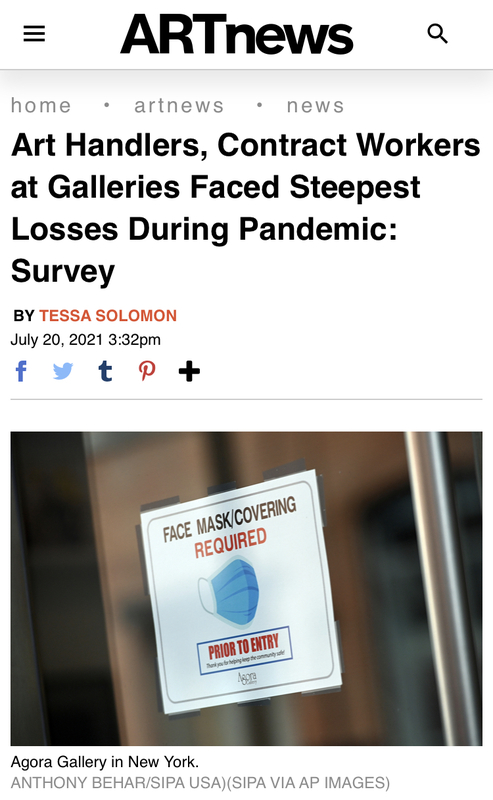 2021-07-20
2021-07-20Art Handlers, Contract Workers at Galleries Faced Steepest Losses During Pandemic: Survey
The ARTnews article uses ADAA (Art Dealers Association of America) data from their official survey to consider the far reaching implications of the pandemic on the art world. Examples of staggering job loss in art handlers and contract workers in particular provide a look into possible changes in the artillery model for the short term while in lockdown. Quantitative data on online art fair participation, and percentages of galleries that received the PPP loan are included as well. -
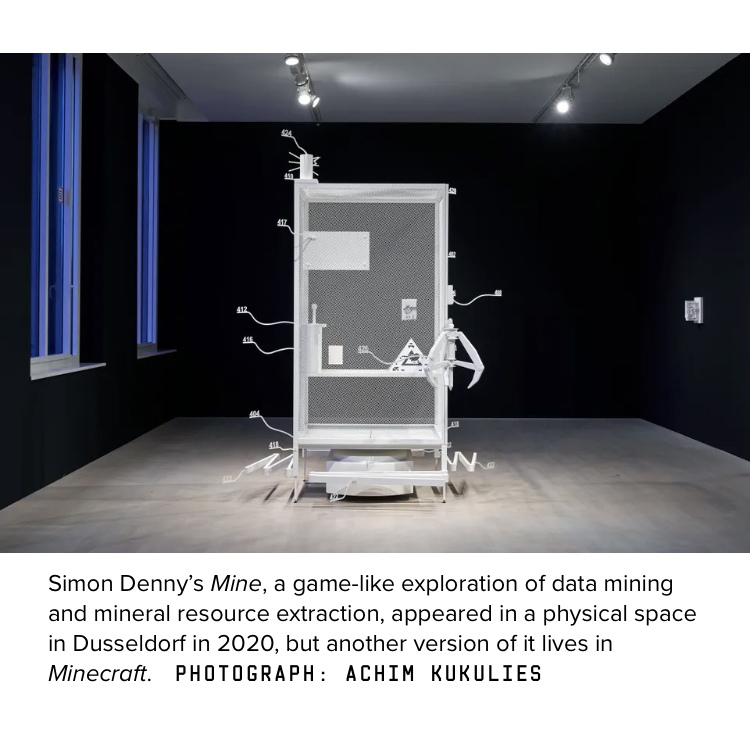 2021-02-09
2021-02-09Artists Reimagine How Covid-19 Will Shape the Art World
This Wired piece by Lydia Horne starts off with a really interesting point about the viewer relationship with art as social distancing before Covid and the distance in museums and galleries for the artwork’s protection. It is more than just considerations about virtual auctions and virtual viewing - the way that the art itself translates is something that many artists are struggling with. The article also speaks to the ways that artists are redefining themselves and their work. The changing structures and changing methods reaching an audience or sharing work, some artists are using the pandemic to explore possibilities to reshape the art world. For example, non-profits and community-based models instead of the traditional gallery model. -
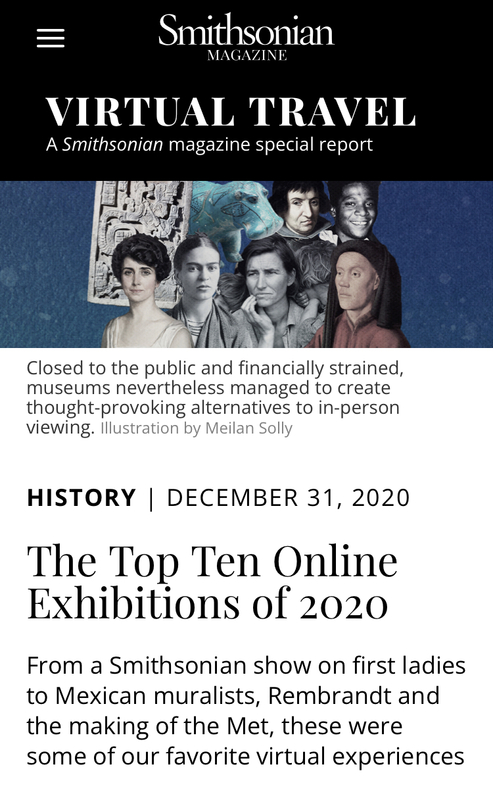 2020-12-31
2020-12-31The Top Ten Online Exhibitions of 2020
In an end of the year article, Smithsonian lists the top ten virtual museum exhibitions of 2020: 1. The Smithsonian’s National Picture Gallery, “Every Eye Is Upon Me: First Ladies of the United States” 2. Peabody Essex Museum, “Jacob Lawrence: The American Struggle” 3. The Whitney Museum, “Vida Americana: Mexican Muralists Remake American Art, 1925-1945” 4. The Museum of Modern Art, “Dorothea Lange: Words & Pictures” 5. Museum of Fine Arts, Boston, “Writing the Future: Basquiat and the Hip-Hop Generation” 6. Metropolitan Museum of Art, “Making the MET, 1870-2020” 7. The British Museum, “The Museum of the World” 8. The Rijksmuseum, “The Night Watch” 9. Museum of Fine Arts, Ghent, “Van Eyck an Optical Revolution” 10. Instituto Cervantes, “Wise and Valiant: Women and Writing in Gold Age of Spain” -
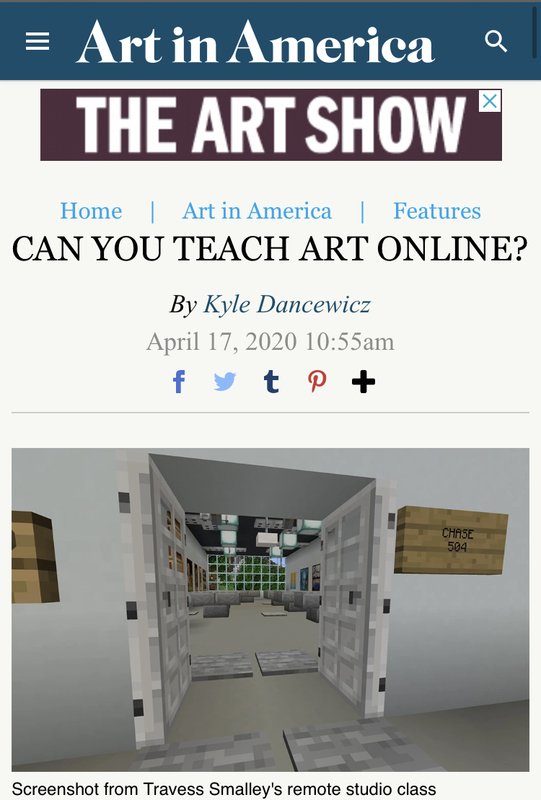 2020-04-17
2020-04-17“Can You Teach Art Online?”
“Can You Teach Art Online?”, published on Art in America online, examines the questions artists-instructors are asking amidst a transfer to online learning. Different instructors who teach in various mediums are interviewed and expose difficulties of teaching art virtually as well as the positives and new innovations that have come out of necessity. I found the argument by Carissa Rodriguez, a Harvard professor in the arts, very interesting. She discussed the limitations of platforms like Zoom and how it is difficult to engage others in an artistic subject behind a screen. Rodriguez teaches a screen-based artistic medium and she explains that for her subject matter “the platform seems a notch too self-reflexive, collapsing screenings, critiques, and discussions onto the equalizing plane of her students’ monitors, the same site where they browse social media and binge-watch TV shows”. The article highlights how instructors are using lockdown to explore ways to make art and complete projects without institutional resources. Therefore, questions of shifting models in academia arise. -
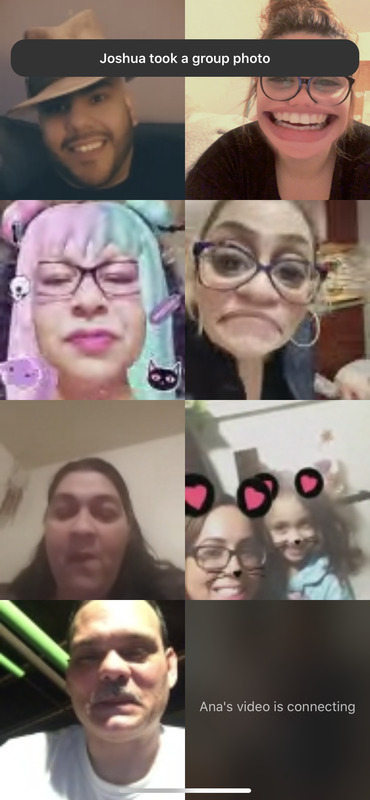 2020-03-28T19:52
2020-03-28T19:52Technology Fun During Pandemic
The photo I am submitting is a screenshot of a Facebook video call with a few of my family members. My family has always been very close. We are a loud and very big Puerto Rican family that enjoys our get togethers as much as possible. Over the last few years, people have scattered about the country, making it harder for all of us to get together. One things this pandemic enabled us to do was to communicate and gather together via online video platforms. As my aunts and uncle turned to facetime and facebook video calling in order to check in on my cousins and I, it actually gave us room to gather more than we had been pre-covid. When the world move to technology and zooms to bridge the gap of human face-to-face interaction, people got closer while being further apart. -
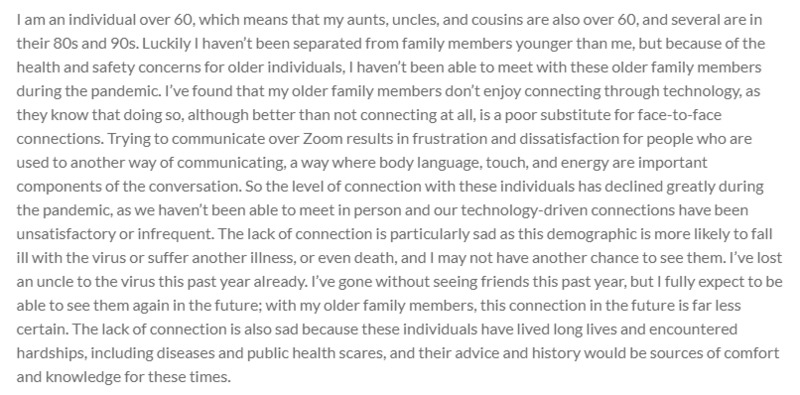 -2021-06-20
-2021-06-20Losing Connections with Older Relatives and with Their Life Knowledge
I am an individual over 60, which means that my aunts, uncles, and cousins are also over 60, and several are in their 80s and 90s. Luckily I haven’t been separated from family members younger than me, but because of the health and safety concerns for older individuals, I haven’t been able to meet with these older family members during the pandemic. I’ve found that my older family members don’t enjoy connecting through technology, as they know that doing so, although better than not connecting at all, is a poor substitute for face-to-face connections. Trying to communicate over Zoom results in frustration and dissatisfaction for people who are used to another way of communicating, a way where body language, touch, and energy are important components of the conversation. So the level of connection with these individuals has declined greatly during the pandemic, as we haven’t been able to meet in person and our technology-driven connections have been unsatisfactory or infrequent. The lack of connection is particularly sad as this demographic is more likely to fall ill with the virus or suffer another illness, or even death, and I may not have another chance to see them. I’ve lost an uncle to the virus this past year already. I’ve gone without seeing friends this past year, but I fully expect to be able to see them again in the future; with my older family members, this connection in the future is far less certain. The lack of connection is also sad because these individuals have lived long lives and encountered hardships, including diseases and public health scares, and their advice and history would be sources of comfort and knowledge for these times. -
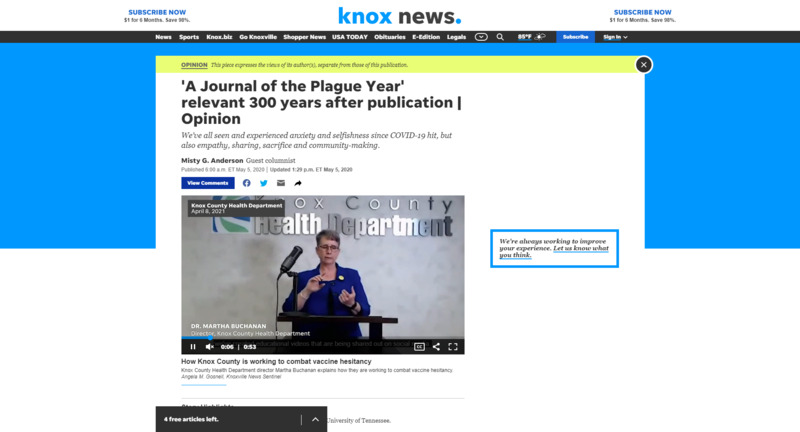 2021-06-02
2021-06-02'A Journal of the Plague Year' relevant 300 years after publication
During the pandemic, I took a graduate history course in which we read Daniel Defoe's 'A Journal of a Plague Year.' I had read the piece about 5 years before, but I missed so many of its nuances because it all seemed so foreign. It was striking to me both how much and how little has changed from 1665 to 2020/21. Quarantine, death tolls, travel bans, hoarding had all suddenly become commonplace occurrences that I could relate to. The centuries may have changed our technology drastically, but nothing seems to have changed about the human condition nor the human spirit. -
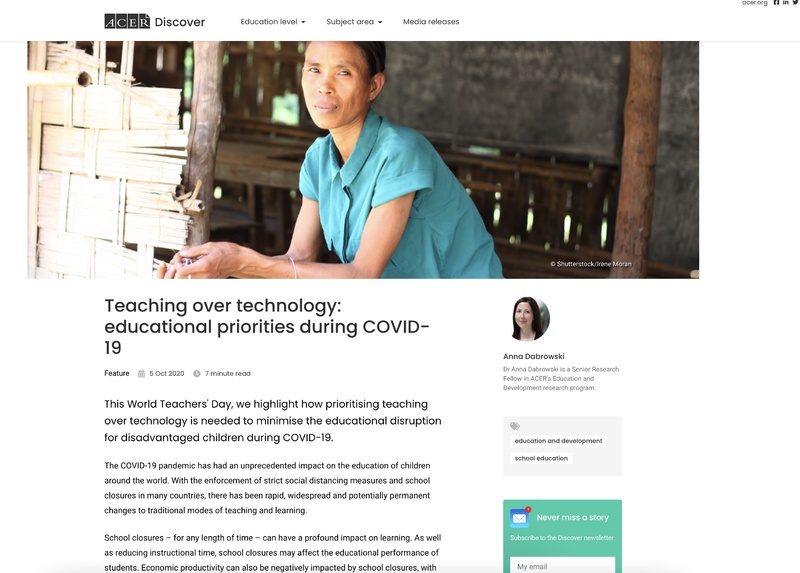 2020-10-05
2020-10-05Teaching over technology: educational priorities during COVID-19
This article focuses more on the teaching side of the shift to online schooling. The reading mostly discusses different challenges that teachers face in regards to accesses with technology or ways that they can work with disadvantaged students during the pandemic. The second half of the reading focuses mostly on the support and recognition that teachers deserve due to the circumstances provided by COVID-19. -
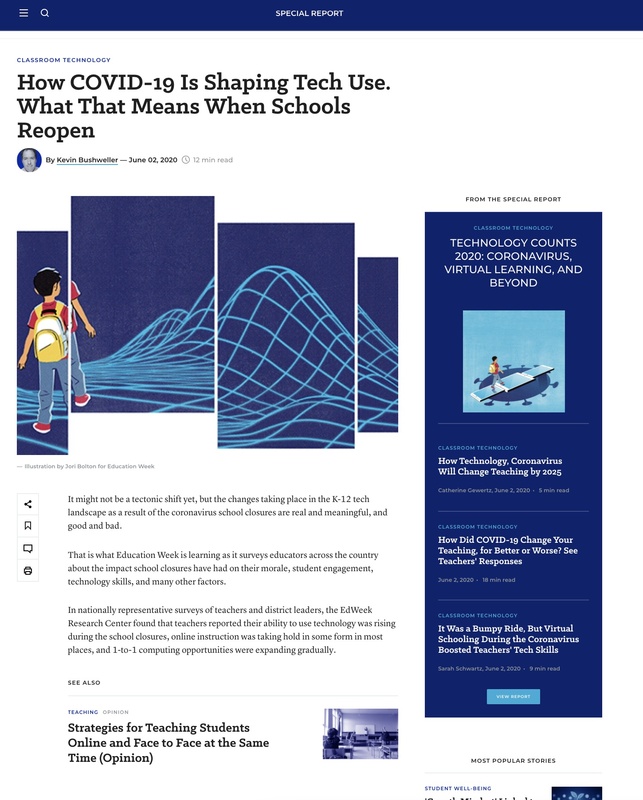 2020-06-04
2020-06-04How COVID-19 Is Shaping Tech Use. What That Means When Schools Reopen
This article discusses mostly how teachers are changing their beliefs/enhancing abilities due to the switch onto the online function. The article discusses a number of relevant topics such as teacher's capabilities to utilize educational technology, ability to troubleshoot technology problems, and technological environments for both students and teachers. There is also discussion on their views on the online teaching format, as well as their responses regarding economic and technological disparities for certain groups of students. -
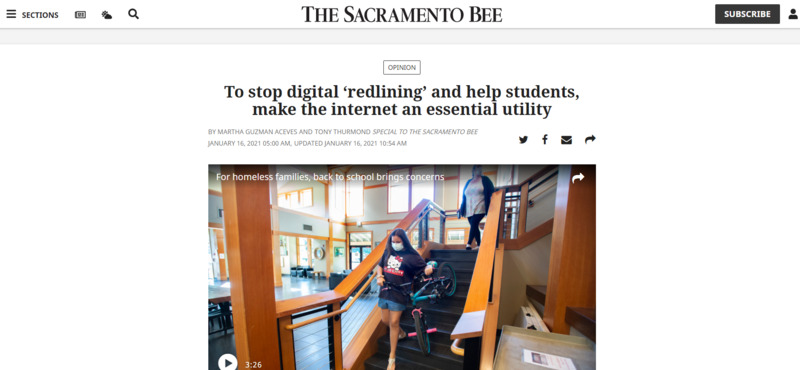 2021-01-16
2021-01-16To stop digital ‘redlining’ and help students, make the internet an essential utility
Last year, Gov. Gavin Newsom signed Senate Bill 98 to help ensure that all of our children are able to successfully continue their education virtually through the Internet. Unfortunately, although this requirement on our educators came with significant funding, the California State Legislature did not couple it with any requirements for internet service providers to actually provide service. We have seen this problem manifest acutely in the many school districts around the state that are scrambling to keep students connected. California’s surge in COVID-19 cases means remote education will continue to be the safest way to continue learning for many students in the weeks and months ahead. But the need for connectivity will not end after the pandemic. If we truly want to level the playing field for students in California — to ensure all students have access to the technology and tools that not only help them access their learning remotely but will be needed for success the rest of their lives — we cannot rest until the internet flows like electricity. -
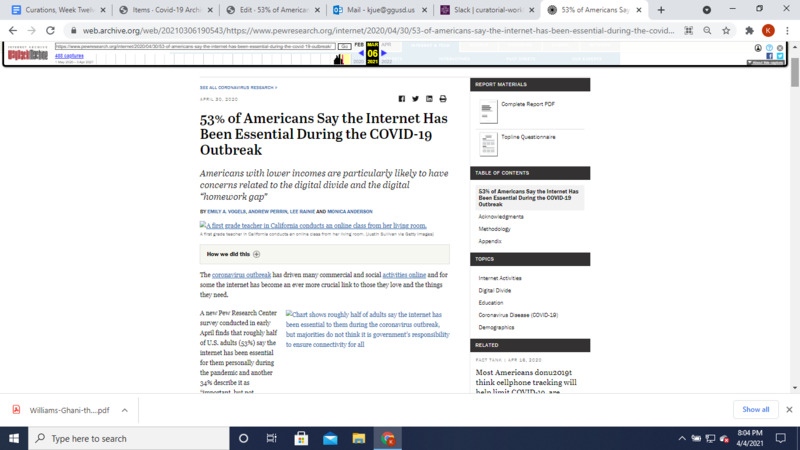 2020-04-30
2020-04-3053% of Americans Say the Internet Has Been Essential During the COVID-19 Outbreak
This Pew Research article discusses how different socioeconomic status and political preference influences how Americans believe schools should provide technology for their students. More importantly, the article goes into detail about how parents with lower incomes are more likely to struggle to provide some sort of adequate situation for their children, especially when the majority of Americans view technology and the internet as an essential tool during the pandemic. Besides student access to technology, economic class is also having an impact on how some individuals can afford their own internet connections and phone plans, thereby limiting their access. -
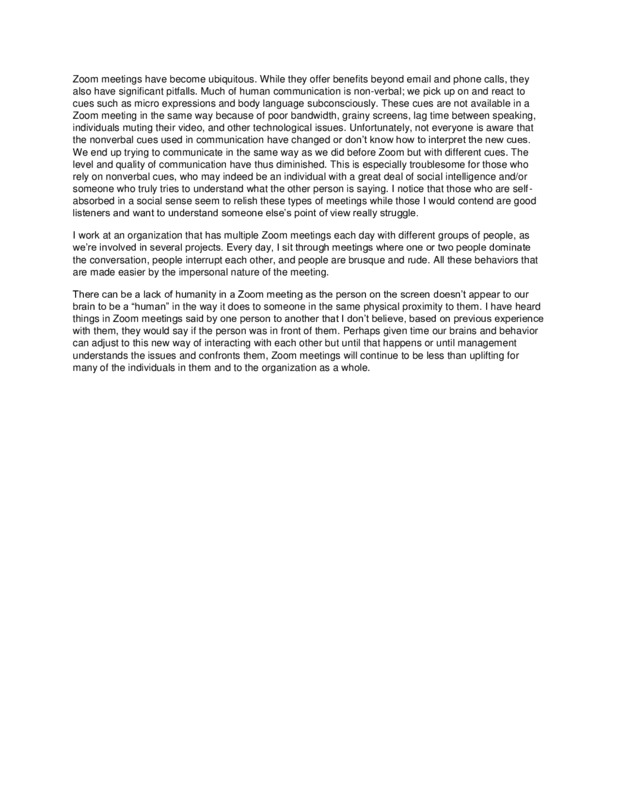 2021-02-05
2021-02-05The Inhumanity of Zoom
With the increase in teleworking due to the pandemic has come an increase in Zoom meetings. These meetings have proven to be almost inhumane in my mind, as it's very difficult to communicate with others without nonverbal cues and people use the impersonal nature of communicating over a screen rather than in person to be pushy, rude, and self-absorbed. Although the pandemic will end one day, Zoom meetings will probably still be prevalent and lessons must be learned about how to make these meetings polite, uplifting, and productive. -
 2021-02-02
2021-02-02The Unexpected Digital Benefits of Distance Learning
When I first saw our Distance Learning schedule, I was actually relieved. When we were still thinking of re-opening back in August, the Hybrid schedule they proposed was atrocious. I would be able to synchronously (live instruction) teach a student for only 2 hours a week, the other three hours would be asynchronous. The powers that be told us “you have to just deal with the fact that you won’t be able to teach everything you usually do.” Of course, these are the same powers that be who expect the kids to pass their AP tests, and tell us that state testing (which is still happening regardless of the opening status) is “high stakes.” Contradictions, much? So, the Distance Learning schedule, which allows me to see a student three times a week, for 3 hours and 20 minutes of live instruction, was a vast improvement. Still, block scheduling? The very idea of block scheduling sent chills down my spine. Even in college, I opted for M, W, F classes because I do not sit still long enough for the 1.5-hour classes that were on T/Th. And how would I digitize an entire course? I was lucky to have already “flipped” my classroom about five years ago, when I recorded all my lectures and assigned them to watch on YouTube, freeing up class time for discussions and document analysis. But how would I do gallery walks, document analysis, Socratic Seminars, etc. digitally? Could I? Now with a semester of Distance Learning under my belt, there have been some huge advantages to being forced into this completely digitized world. First, digitized documents are amazing. So much of my course is document analysis. With digital documents, the copies aren’t blurry, the kids can zoom in if the font is small, and thanks to Google, they love to highlight and annotate the heck out of them. And Jamboards have been a godsend for collaborative analysis. I am debating whether I will ever go back to paper document analysis. Online tests have also been a game changer. I always steered away from online tests, due to fears over test security. Test days were big affairs in my class. The kids would put all their items, including phones, on the counter. I would go by each table and make them turn out their pockets to ensure no phones. I liked to joke that test days were more serious in my class than going through TSA. Because the students sat in tables of four, there were four forms of the multiple choice test and 20 versions (4 versions per period, for five periods) of the short answer portion of the test. The end of test day left me with 180 Scantrons, 180 short answer questions to grade, all with different forms, plus their notebooks, which they turned in on test day. I had to let that kind of control go this year and jump headfirst into online testing. And I am so glad this happened. It was the push I needed. The world of online testing has improved remarkably since the ten years ago that teachers at my school began to move toward it. It is SO EASY to grade and to make different forms with the click of a button. The multiple choice grades automatically and the short answer, I click the points and it pushes to the gradebook. A task that took me four hours now takes me 30 minutes. I know while the kids are at home, there is nothing to stop them from having notes on the side or on another device, but honestly, with tests that are based on historical reasoning skills, I don’t really care if they are looking up the name of an act, event, or person. I am more interested in if they can effectively use that information to support their argument. When we’re back in person, I can ensure they don’t have their phones and that Go Guardian is on to keep them from opening other windows. Without Distance Learning, I would have never made this change. Writing has also dramatically improved due to technology. I always made my students write essays by hand because the AP exam makes them write them by hand. However, with the AP exam going digital, I can now, too. It is incredible to see how the quality of writing has improved through typing. It is terrible to think that students in previous years may have been less successful on the AP exam simply because they did not formulate ideas as well with pen and pencil as they would on a computer. Block scheduling, too, has been surprisingly smooth. It is so refreshing to have time to analyze documents and follow it up with writing and peer editing - all in one period! Of course, I will be fine to return to our 55 minutes classes someday. I still don’t sit still well. Will I keep the course entirely digital when we are (hopefully) back to a normal year? Probably not everything. I miss the kids having a notebook that we build throughout the year, and will probably return to our traditional notebook for in class activities. BUT I am happy to never run a Scantron again! -
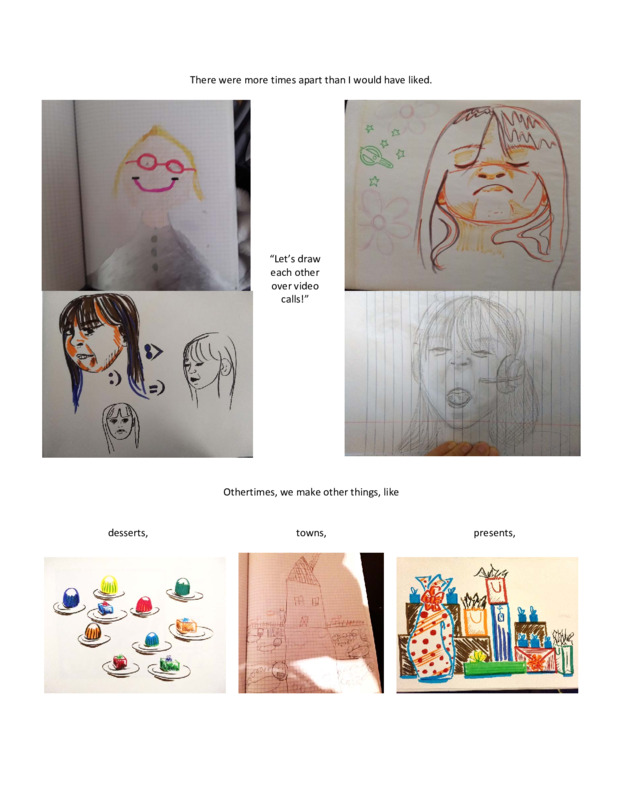 2021-01-31
2021-01-31Art to be together
These images and accompanying text express emotion of longing to be with loved ones and happiness at finding ways to feel together during prolonged times of separation because of COVID-19. The drawings and paintings were created as a means of spending time with others and creating things, both during quarantine (drawing together via video calls) and in public spaces (chalk painting in a driveway where neighbors passing by might see it). Some of the art was done for mental health, sense of family and community. -
 2020-12-18
2020-12-182020 in a nutshell
This is the PlayStation5 the most sought-after piece of technology in 2020. -
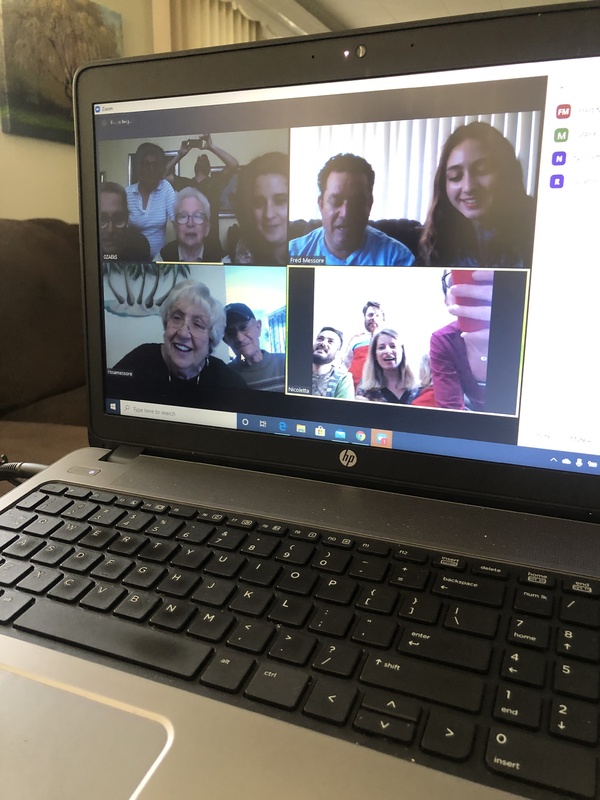 2020-04-12
2020-04-12How Families Interact During Covid-19
This photo is of my family during one of our zoom meetings. My family lives in Italy and so this is the only way for my family to stay connected during the pandemic. We were planning to visit them in Italy during the summer, but we were unable to due to COVID. This photo demonstrates something significant about my generation under COVID because technology has allowed us to stay connected through the pandemic. A video call was a wonderful experience for the older members of my family because they were only able to send letters when they were younger and talk on the phone. Even though we are in the middle of a pandemic technology has truly allowed my generation to remain connected with our family and friends. As described in our reading “What do archivists keep or not” this is an example of a primary source because it is “tied to particular people doing particular things at [a] particular time and place” (Thompson, 3). -
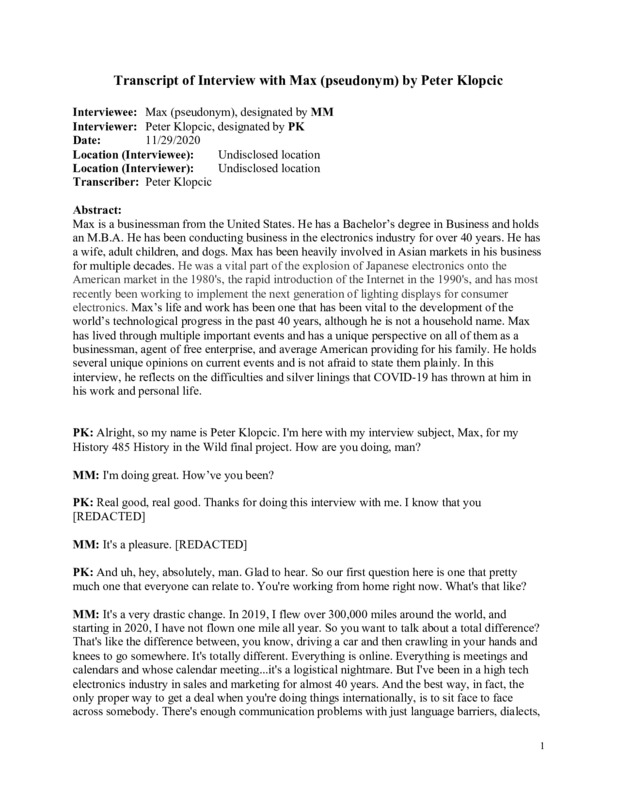 2020-11-29
2020-11-29International Businessman Oral History, 2020/11/29
IMPORTANT NOTE: My professor, Dr. Blake Jones, approved of the anonymity of my interview subject. My subject is highly private and wishes to maintain that anonymity for business and personal reasons. Max is a businessman from the United States. He has a Bachelor’s degree in Business and holds an M.B.A. He has been conducting business in the electronics industry for over 40 years. He has a wife, adult children, and dogs. Max has been heavily involved in Asian markets in his business for multiple decades. He was a vital part of the explosion of Japanese electronics onto the American market in the 1980's, the rapid introduction of the Internet in the 1990's, and has most recently been working to implement the next generation of lighting displays for consumer electronics. Max’s life and work has been one that has been vital to the development of the world’s technological progress in the past 40 years, although he is not a household name. Max has lived through multiple important events and has a unique perspective on all of them as a businessman, agent of free enterprise, and average American providing for his family. He holds several unique opinions on current events and is not afraid to state them plainly. In this interview, he reflects on the difficulties and silver linings that COVID-19 has thrown at him in his work and personal life. -
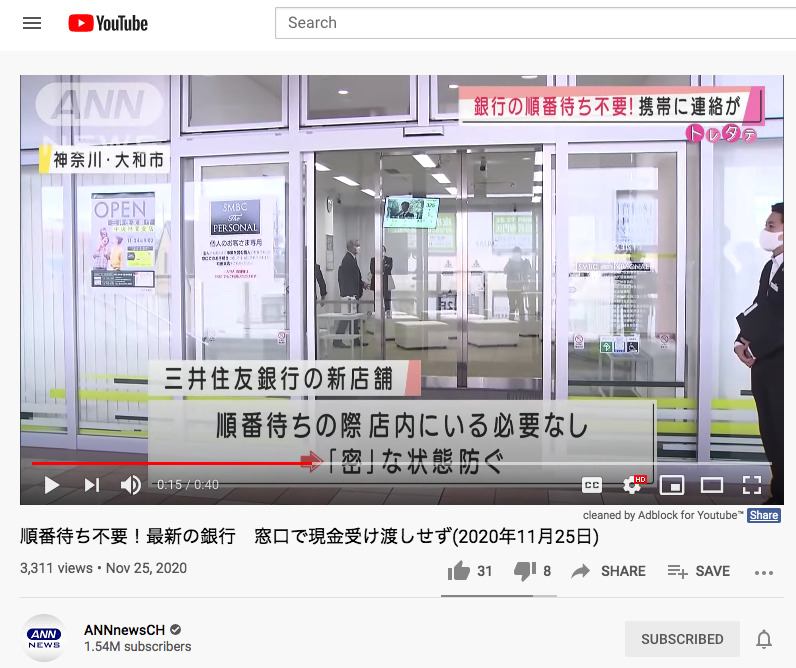 2020-11-25
2020-11-25順番待ち不要!最新の銀行 窓口で現金受け渡しせず(2020年11月25日) - No need to wait in line! No delivery of cash at the latest bank counter (November 25, 2020)
This is a news where Mitsui Sumitomo Banking Corporation, one of the biggest Banking Corporation in Japan, made the bank stores much more convenient and less clustered. Personally, I felt this was very slow in terms of technology, because compared to countries such as Korea, Japan always were analog with how they organized the bank and putting money. 銀行の順番待ちも窓口前でずっと待つ必要がなくなります。 三井住友銀行が新たに開設した店舗では番号札を取った客がその場にいる必要がなく、店内が混雑して「密」な状態にならないようにします。また、窓口で現金の受け渡しをしません。高額の入金などは、客は電子サインの後にQRコードを受け取り、高性能なATMを使います。三井住友銀行は全体の約7割をこうした店舗にする計画です。 You don't have to wait in front of the counter to wait for the bank. At the store newly opened by Mitsui Sumitomo Banking Corporation, the customer who picked up the number tag does not need to be in the store, so that the store will not be crowded and become "clustered". In addition, cash will not be delivered at the counter. For large deposits, customers receive a QR code after an electronic signature and use a high-performance ATM. Mitsui Sumitomo Banking Corporation plans to make about 70% of all stores like this. Video Translated by Youngbin Noh -
2020-11-25
Working and Living in a Pandemic
I think one of biggest impacts of COVID for me has been wondering if, or when, someone close to me will contract the virus. A fear that at times can be intense or foreboding, and at other times, that fades into feeling ‘normal.’ It was several months into the pandemic before I knew of anyone who knew someone that was ill. More recently a couple of family members had very serious cases of the illness, and a couple more that tested positive but had no symptoms. Being vigilant, following safety procedures such as masks and hand sanitizer have finally become normal as well. Early days I found myself nearly obsessed with reading the news, watching the daily press conferences, and looking up the statistics. These activities have reduced to a daily glance or two to look at numbers or read the latest about the vaccination. I worry about my family. I wonder sometimes if I feel even slightly ill or off if ‘this is it’— have I finally contracted it? And then worry about giving it to others. Another way that I have felt the impact has been in the work environment. I work remotely in the technical sector, and have for several years, so at the beginning of the pandemic there were no adjustments in my routine. However, it didn’t take long to see the impacts of the virus on my clients. Impacts that were not prepared for even with disaster recovery, risk management or continuity planning. The financial impacts businesses affected their ability to ensure employees could work from home. That their employees would have the correct equipment, connectivity, could adapt to the necessary behavioral changes that can disrupt productivity, etc. How now can we receive, prepare and ship equipment, when no one can be in an office to receive anything? The changes have especially impacted efforts to bring on new employees. One thing that I found striking was the requirements in security and access to data when moving from a secure network environment, to set up for the same security at home. A majority of my teams live in countries outside of the United States where some don’t have internet in their homes, let alone being set up to manage Personal Private Information (PPI). My clients in financial sectors have stringent background checks that can take several weeks to clear in the “old world” under normal conditions. With agencies closed and workforce reduced, it is taking two to three times longer to get simple things accomplished. The last major impact I have felt during the shift to my sector becoming a “working from home one,” was experiencing people on the other end of ZOOM, as we all had to overcome our fears about interruptions. Children crying, wanting attention because they don’t understand why mom and dad are home but can’t pay attention to them. Dogs barking, doorbells ringing, calls dropping. It took several months to work out many of the kinks, and for everyone to adjust to these interruptions, but being OK with them. Overall, I would say that I am not directly impacted too much for the moment. Most of the adjustments that have been made and are now normal feeling. Things are finally feeling like they are back to business as usual, I suppose. On a personal level, my fears rise and wain, and each day is different. I am leery of vaccinations, and wonder if the “wonder cure” we’ve been promised will be miraculous, or if more difficulties will follow? The verdict is not out on that yet, so we will have to wait and see what our next ”new normal” will really look like. -
 2020-11-10
2020-11-10Life in a Digital World
For millions of people, the blue and white logo of the digital video meeting service, Zoom, has become a familiar sight. I am sure that many of us, like myself, had to abruptly learn about Zoom in March 2020 when our lives entered a digital phase due to the pandemic. I’m sure that I am also similar to many others when I can now say that (in November 2020) I am more than proficient in my Zoom skills. Everything from school to work to social meetings are now conducted by sending Zoom invitation links. Zoom has become the classroom, the office, and the cafe…..possibly without even changing the room you are sitting in. This year has not been easy but, as I look back over these past months, I have realized that the technological world has become a surprising lifesaver. Technology has allowed people to stay connected to the world without even stepping outside their homes. Phone calls, emails, texts, Zoom meetings….they have all played a part in keeping us close to our family and friends. Even my college graduation in May was conducted over Zoom. We moved our tassels as one graduating department, even as we sat in front of our separate computers in different locations! I have started my first semester at graduate school this fall at a Pittsburgh university. My classes are conducted through Zoom, so I am not actually on campus or living in the city! While I miss in-person social interactions, I am also incredibly grateful that, thanks to digital tools and dedicated professors, I have been able to continue my education despite this year’s difficult circumstances. Interestingly, despite global lockdowns, I have been able to “visit” parts of the world I would not normally be able to, due to institutions’ and organizations’ commitment to providing virtual experiences. From our home, my family and I have watched theatrical performances, concerts, and other events occurring in different geographical areas because of the ability to livestream. We have also been exploring various museums by taking virtual tours and looking through virtual collections. Through technology, I have been able to learn about and experience events and places that I would not have been able to otherwise! Eventually, this pandemic will be over. I hope, however, that institutions and organizations continue to reach out digitally even when it is safe to resume in-person group activities. Digital programs and projects allow people to participate in events and experiences that might have been too costly in travel expenses or time commitments had they only been offered in traditional, in-person formats. Regardless, I am grateful for what digital programming and technology have already given me. This year has been incredibly stressful and filled with anxiety. Sometimes, it has made all the difference to be able to connect with a few people over a Zoom meeting. In the end, the Zoom logo has come to signify many things to me: pandemic, prevalence of digital technology, and, when it comes down to it, the importance of human connectivity and relationships. -
 2020-08-26
2020-08-26Grandpa & Gracie
I’ve missed my Grandpa terribly, but we’ve able to bond during the pandemic through a continuous email exchange concerning my dog. I’ll send him photos, and he’ll help me conspire ways to keep her safe from falling in our pool. We’ve been able to connect through our shared love of Gracie, even though we haven’t seen him or my Grandma for months. It’s been one of the most fulfilling experiences I’ve had in this plague year, especially because Grandpa is mostly deaf and can’t communicate well in person. It’s interesting how technology (and Gracie!) have facilitated connection between us. For a nonagenarian, he’s probably more proficient with technology than I am! -
 2020-10-30
2020-10-30“We’ve been gearing up for this financial year”: Hornby returns to profit for first time in nearly a decade
During the pandemic, many people have turned hobbies to keep themselves busy and to relieve stress. Because of this, the hobby industry has seen a revitalization. Some company's, such as Hornby, are seeing profits for the first time in years. -
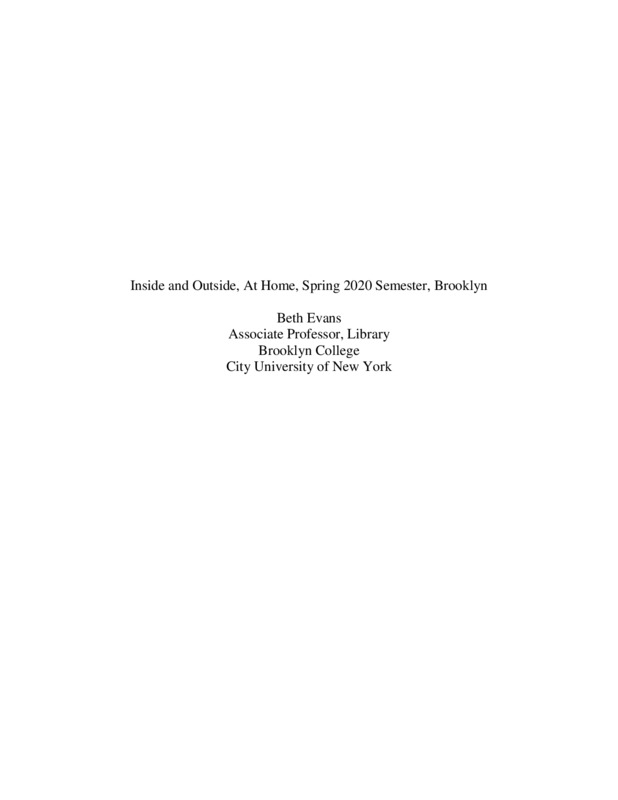 2020
2020Inside and Outside, At Home, Spring 2020 Semester, Brooklyn
This submission interweaves the personal and professional experiences of an associate professor in the Brooklyn College Library with references to events happening in the larger society during the months of the COVID-19 pandemic through early October 2020. -
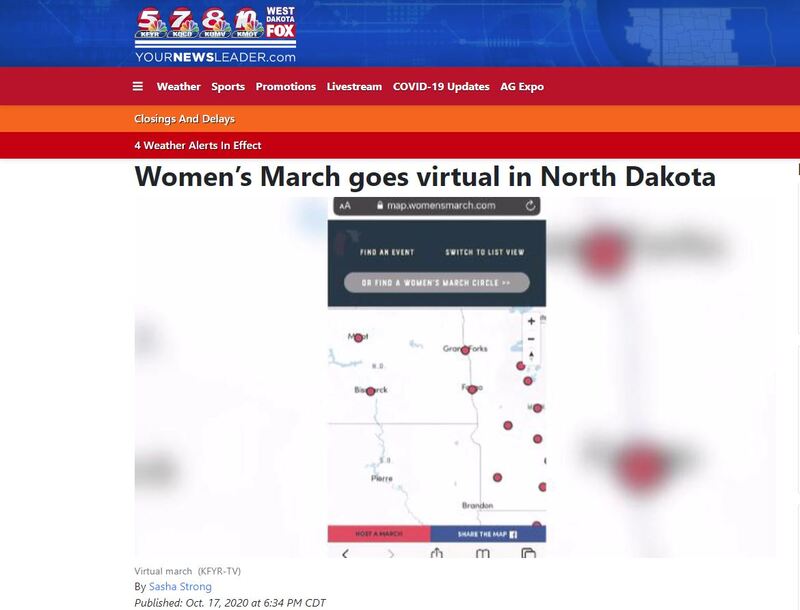 2020-10-17
2020-10-17Women's March goes virtual in North Dakota
This screenshot captures a story published by a local news provider in North Dakota. The story is important because it describes another effect of COVID, relying heavily on technology. Having to organize a women’s march via Zoom showcases the resiliency of people and their dedication to a cause. -
 2020-04-05
2020-04-05Corporate Growth
This is a photo of Elon Musk smoking marijuana on the Joe Rogan Experience podcast, captioned with the phrase “show me the money.” This is a reference to the astronomical growth of the Tesla Corporation in 2020 and the average investor’s potential to secure massive gains, as well as a joking reference to the near worship of Elon Musk that can be found in the subreddit ‘WallStreetBets.’ This subreddit often features ‘absolute madlads’ making huge gambles on stocks (usually TSLA, AAPL, or AMZN) and subsequently either securing massive returns tallying into the hundreds of thousands or losing everything. When most of my family was laid off from their jobs, my brother and I turned to day trading to keep ourselves and our family afloat. I was one of the only ones still employed at the time, and I was doing this in addition to working up to 75 hours a week to take advantage of overtime pay stacked on top of hazard pay. Although only my father and I were still working, everyone in the family still had bills to pay and the rent was still due. Tesla’s stock, specifically, has grown almost 500% this year and is set to grow even more. This meme is somewhat of an inside joke my brother and I had as we began securing leverage and buying covered calls on TSLA to increase our overall cash flow with the little savings we had to work with. We were quite literally counting on Elon Musk and his revolutionary car company that we had placed our faith in during this time to pay our rent. Luckily, it worked out for us. Ironically, the massive transfer of wealth to corporations from small businesses that went under as a result of COVID-19 was incredibly beneficial for my family and I since we invested in the right stocks at the right time. -
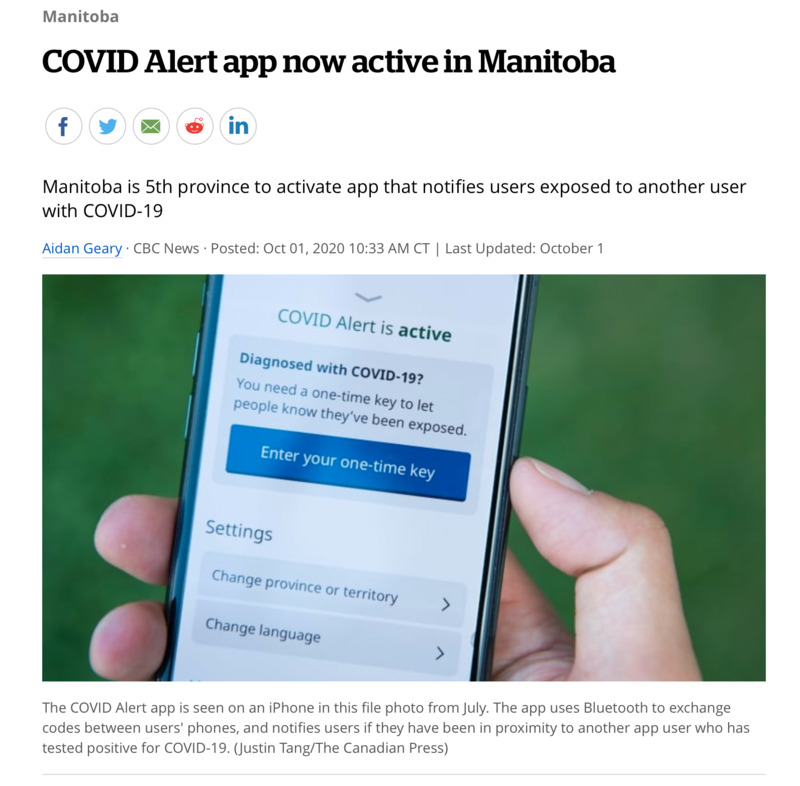 2020-10-01
2020-10-01Covid Tracker App Now Available in Manitoba
Manitoba has become the 5th province to activate Canada's Covid-19 tracker app using Bluetooth technology. The app alerts the user when they have come into contact with someone who later tested positive. -
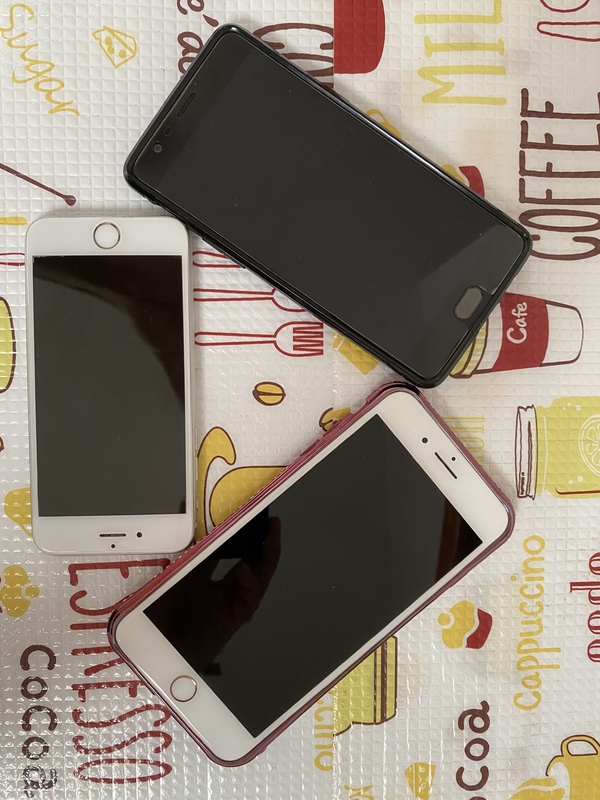 2020-05-19
2020-05-19The World Exists in the Palm of My Hand
The object I'm submitting does not only show us its important during this Pandemic but in everyday life. This object has merely existed for no more than 30 years but has had profound impact on our society. Companies Like Apple Inc. and Samsung Group have made fortunes seeing these items to us. The object that I believe has made a massive impact on my life and the lives of many people around the world are cellphones. These small bricks of metal and plastic seemingly run the world. They control humans and push forward everything from the spread of information to entertainment. Without my phone to keep me entertained, connected, informed and busy; the quarantine and the Pandemic in general would have been much hard. Anywhere in the world I connect and communicate with anyone. During a time when we weren't allowed to leave home phones became a lifeline for communication. I find it very interesting that before the Pandemic people would blame phones for the lack of human contact. Now that the Pandemic has been in full swing the only form of contact we have is through these phones. -
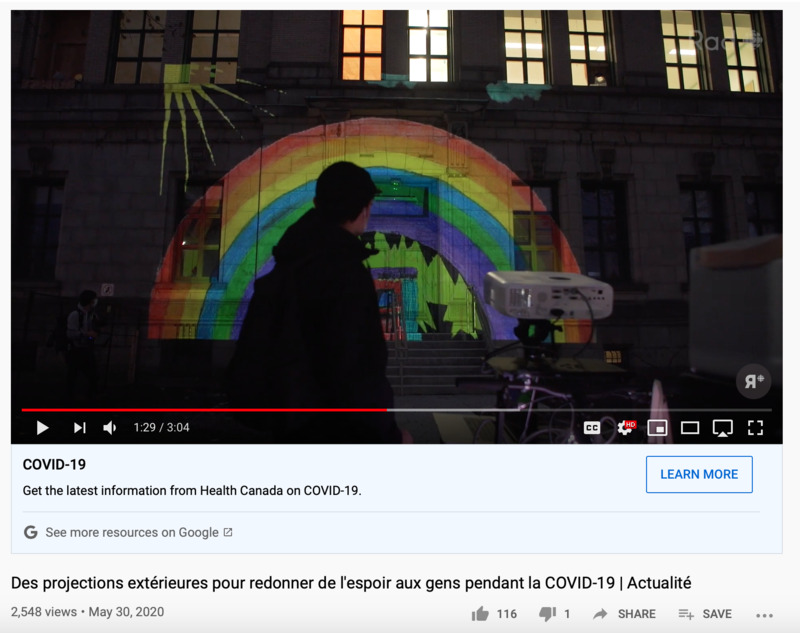 2020-05-30
2020-05-30MAPP_MTL utilise le video mapping pour redonner de l'espoir dans les rues de Montreal
This story is about an organization called MAPP_MTL, which promotes projection mapping technology, projecting art onto buildings in Montreal with words and images of positivity. The project is called "Les messagers de l'espoir" (The Messengers of Hope). Cette histoire parle d'un organisme qui s'appelle MAPP_MTL, qui encourage la technologie de video mapping. Ils projettent des images et mots positifs sur les murs des immeubles à Montreal. Le projet s'appelle "Les messagers de l'espoir". Canada, Montreal, Quebec, art, technology -
2020-08-08
Screen Time During the Pandemic
In quarantine I haven’t had much to do, so the majority of the time I spend on my phone, watching videos, playing games, watching shows on Netflix, or just texting/calling my friends to keep in touch. I think this says a lot about how the pandemic has affected my personal life and my activities. Whereas I used to go out to eat with friends and family or just meet up at someone’s house, or the park to hang out. I cannot do these things anymore so instead I pass the time on my phone. -
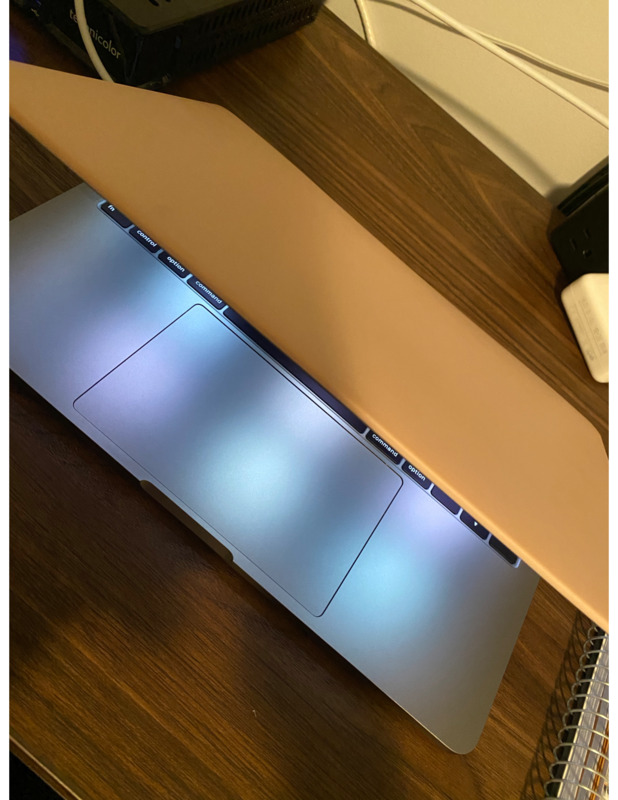 2020-08-04
2020-08-04Life in a Pandemic
My laptop represents life during a pandemic because it shows how technology was used to overcome the challenges of being isolated and away from school, work, those that we love, etc. The laptop helped me personally because I was able to stay in touch with friends, become an ambassador for a company close to my heart, learn new skills, and get a marketing job. -
 2020-05-19
2020-05-19Rewilding (Part I)
This is a literary response to Covid (one of three parts) from the point of view of someone far away from the worst of it.
